Like any masterpiece of pop art, Spider-Man: Into the Spider-Verse is both fresh and familiar. We’ve never seen an animated feature quite like it, but we’ve seen a lot of its parts before. Obviously, some of those parts belong to other Spider-Man movies, with some specific references to scenes in Sam Raimi’s trilogy and a couple nods to Spider-Man: Homecoming. There’s also an awesome Easter egg during the Columbia Pictures logo with a glitch pulling up the Torch Lady transformation from Cat Ballou.
For this week’s list of Movies to Watch After, I’ve compiled some historical works that influenced Into the Spider-Verse as well as some related recommendations. Admittedly, they’re not all masterpieces, but maybe in some other parallel universe, those lesser but significant titles were made a little bit better.
Bullets or Ballots (1936)
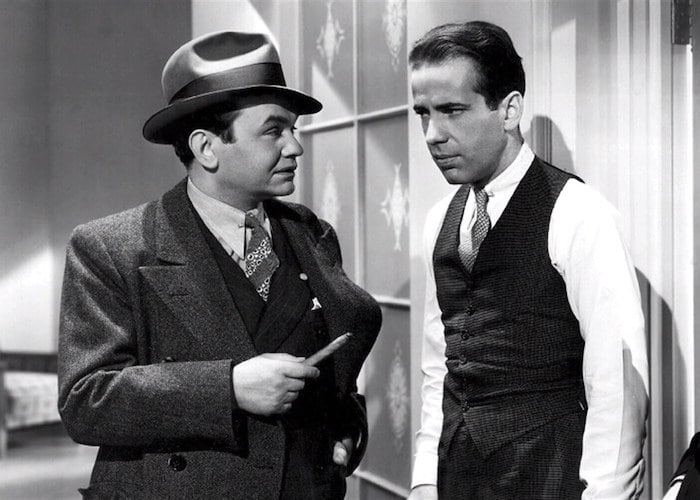
In the comics, Spider-Man Noir is the 1930s version of Spider-Man, but he looks a little different than he does in Into the Spider-Verse. In the new movie, they’ve made him more of a hardboiled detective type. Then, Nicolas Cage added a specific influence to his vocal performance of the character. He told Entertainment Weekly last summer:
“My character’s Spider-Man Noir. He’s really Peter Parker from the ’30s. I tried to channel those noir films with [Humphrey] Bogart, and have those kinds of sounds that he might make with [James] Cagney, or Edward G. Robinson, that kind of way of talking. I tried to give the character that.”
There are a few issues to be had with the character as he’s presented in the movie and as Cage sells him. For one thing, noir films technically didn’t exist in the ’30s, although the crime films of that decade certainly led into the noir films of the ’40s and ’50s. In the movie, Spider-Man Noir also says he’s specifically from 1933 and he fights Nazis. Sadly, Americans weren’t even thinking about fighting Nazis that early.
Humphrey Bogart was also not yet a star back then. And he didn’t star opposite James Cagney until 1938’s Angels with Dirty Faces. He starred opposite Edward G. Robinson earlier, in three movies, Bullets or Ballots, Kid Galahad, and The Amazing Dr. Clitterhouse (plus more later). The excellently titled Bullets or Ballots, in which Robinson plays an undercover cop and Bogart is the gangster who doesn’t trust him, is the one of the three where I feel Bogart’s voice is his most caricature Bogie sounding, a la Spider-Man Noir in Into the Spider-Verse.
Porky in Wackyland (1938)
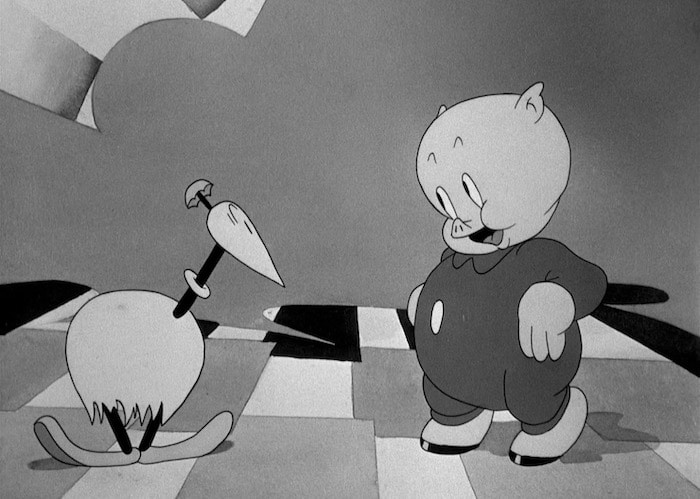
While Spider-Ham wasn’t necessarily modeled after Porky Pig in the comics, Into the Spider-Verse gives the porcine version of Spider-Man a lot of attributes inspired by the Looney Tunes character and his fellow Warner Bros. cartoon icons. Porky in Wackyland isn’t the introduction of Porky, but it’s one of his most famous (and forever preserved) shorts.
The film follows the character as he flies into Darkest Africa and lands in the titular region, which is not just wacky but totally surreal like something conceived by Salvador Dali. A different sort of surreal from what we see in the multiverse collision of Into the Spider-Verse, but similarly far from normal. Although there is no anvil in sight, Porky does get to use a giant mallet and he does utter his famously stuttered “That’s All Folks” at the end.
The Art and Technique of Photoengraving (1950s)
If you’ve read anything about Into the Spider-Verse, you’ve likely seen a reference to Ben-Day dots, which is an old printing process involving a dotted texture. Ben-Day dots would find notoriety through their emphasis in the pop art paintings of Roy Lichtenstein, but until the new Spidey movie they’ve still been thought of as just an antiquated cheap comic look.
This film, the exact year of which is unknown, was made by Horan Engraving presumably in the 1950s based on their 1941 book of the same name. You can skip to about the 21-minute mark of The Art and Technique of Photoengraving (embedded above) for the section presenting the process of Ben-Day dots.
Rocky (1976)

Sylvester Stallone’s original, Best Picture-winning boxing drama is not something I would have come up with to recommend with Into the Spider-Verse. The relevance definitely eluded me while watching the animated feature. But Rocky is one of the only directly acknowledged influences on the new Spidey movie. Here’s what producer Phil Lord revealed to Cinema Blend about the connection:
It’s an interestingly structured movie because for a really long time Miles is in the movie on his own, and the other lead doesn’t show up until like 35 minutes into the picture. That part of it, actually, we’re fans of long first acts, where you just really get to know the character and what’s driving them. One of the movies we looked at was ‘Rocky.’ The first hour of ‘Rocky’ is just Sylvester Stallone walking around Philadelphia talking to people and giving them advice on their lives. And it’s great! And that’s part of what makes you love that guy.
Howard the Duck (1987)
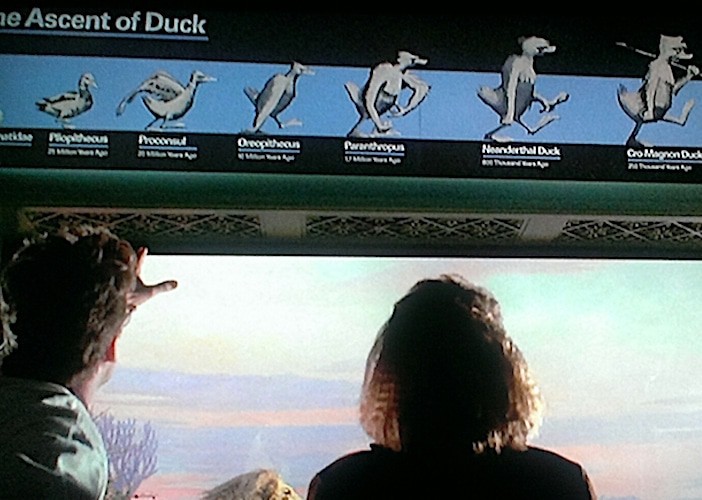
I don’t know about your world, but in my world, Howard the Duck is a good movie. Okay, maybe it’s still just a fine movie. Or an enjoyable bad movie? Not the worst movie ever? Whatever, you can go look at my 10 Defenses for Howard the Duck from a decade ago for all the reasons I vouch for it. One of the points there addresses the fun of an alternate world where everything’s the same as here but with duck people instead of descendants of apes.
The same goes for Peter Porker, aka Spider-Ham, though he was definitely always designed as more of a kid-friendly character (for Marvel’s Star Comics label). Both characters are yanked into the human realm by some mad science project and provide comical clashes by being so weirdly out of this world. And Howard doesn’t even have to make any nods to Donald Duck catchphrases.
Neon Genesis Evangelion: Death & Rebirth (1997)
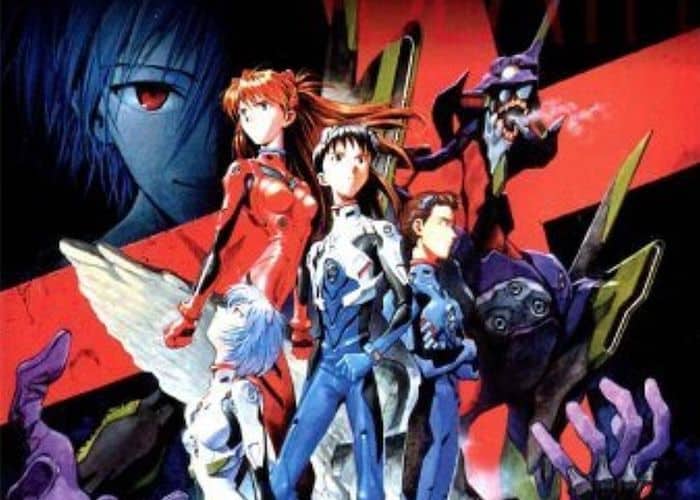
I’ve already covered the inspirations for Spider-Man Noir and Spider-Ham, now here’s the inspiration for Peni Parker and her Sp//dr mecha suit. Neon Genesis Evangelion is an anime series where teens pilot mecha, and while these manned robots don’t look as cute as the one in Into the Spider-Verse, the version in the comics is a lot more humanoid in construction. Neon Genesis Evangelion: Death & Rebirth is a feature made up of footage from the series plus a new ending, so it’s a good introduction to the franchise. Afterward, there’s the much-preferred sequel, The End of Evangelion.
Possible Worlds (2000)

Who doesn’t love seeing Tilda Swinton playing multiple characters in the same movie or multiple versions of the same character in a single movie? After playing a role that switches genders midway through in Orlando, Swinton’s early years also include this mindbending movie where she plays a few versions of the same woman. Her hair and profession are among the differences to distinguish them. Based on a play, Possible Worlds is sort of set in a mixed up dreamscape rather than a definite multiverse, and it follows a man who keeps meeting the woman played by Swinton in her various incarnations.
The One (2001)
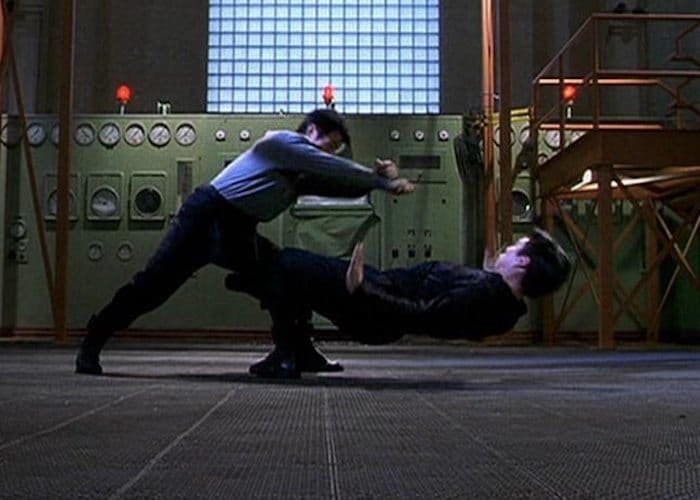
Another movie I wish was a lot better because it has a great premise and a number of little things to like about it, The One is a sci-fi Jet Li vehicle for which the main appeal is that he fights himself. Imagine if instead of banding together, all the versions of Spider-Man in Into the Spider-Verse wanted to be the one and only. Kind of like a mashup of Highlander and Timecop, The One involves a serial killer (Li) who escapes to other parallel universes and murders every version of himself he can find because it makes him stronger. Unfortunately, there’s no cartoon pig version of Li or even a female version, and eventually, the bad version finds a good version he just can’t defeat.
Hulk (2003)
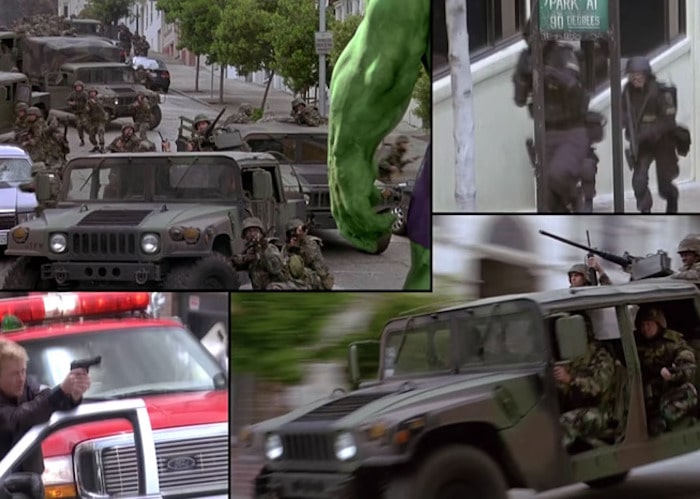
Before the Marvel Cinematic Universe perfected the Hulk character on the big screen, before even the slight misfire of the MCU with The Incredible Hulk, Ang Lee gave us as great a comic book movie as he could at the time with his take on the monstrous superhero. The special effects weren’t quite ready for a fully CG Hulk, and audiences weren’t quite ready for a movie to mimic the look of the comics it’s based on, no more than they had been 13 years earlier with Dick Tracy. Then, it was a cinematographic approach, here an editing choice to divide the screen up a la comic book panels.
At least Hulk didn’t try for Ben-Day dots because that might still look weird in a live-action film. For animation, though, 15 years later, the choice to ape the printed look of comics in Into the Spider-Verse takes a moment to get used to but is effective. It’s not something that every animated superhero movie should do, let alone any live-action comic book films, however. But we’ll take it in this franchise.
The Fabric of the Cosmos: Universe or Multiverse? (2011)

Finally, we’re in need of a documentary about parallel universes and the multiverse. Unfortunately, the one hosted by Olivia Octavius in the educational film shown at Visions Academy does not exist. So, the next best thing is to just go with an installment of the PBS science documentary program Nova, specifically from the four-part series The Fabric of the Cosmos. Hosted by physicist and author Brian Greene, the docuseries looks into the latest theories on space, time, the quantum realm, and of course the idea of a multiverse. Find out if there’s any chance of you running into your own older, opposite-gender, anime, cartoon pig, or 1930s doppelgangers.
The post The Movies You Should Watch If You Like ‘Spider-Man: Into the Spider-Verse’ appeared first on Film School Rejects.

0 comments:
Post a Comment